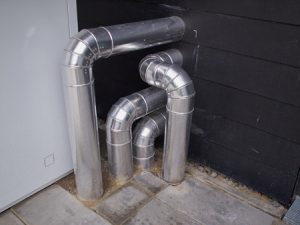 Intuitively, this makes sense, doesn’t it? We want fresh air in our homes. It’s healthier. But let’s think this through. How is air drawn into our homes and what must it pass through to get inside?
Intuitively, this makes sense, doesn’t it? We want fresh air in our homes. It’s healthier. But let’s think this through. How is air drawn into our homes and what must it pass through to get inside?
Two conditions must exist: first, there must be an opening of some sort connecting the outside to the inside, some passageway; and second, there must be a pressure differential between these two areas to draw the air from one area to the other.
Some of the more common passageways include penetrations in the various assemblies, such as recessed lights in the ceiling, plumbing lines, wires and chases. Gaps, such as between the drywall and framing or between the mudsill and foundation, are other common areas.
Pressure differentials are caused in three ways:
The Stack Effect
This is simply the effect of warm, more buoyant air rising and exiting the house through the ceiling to be replaced by cooler air entering from leaks down low. The taller the house, the greater the pressure differential becomes, and the more significant the impact of the leaks.
Wind Pressure
Wind blowing against the side of a house creates high pressure on the windward side while creating low pressure on the leeward side. This differential will push air through the gaps and holes. The stronger the wind, the greater the air exchange.
HVAC Equipment
Most ducts leak and most ducts are located outside the conditioned space, either in the attic or crawl space. When the supply ducts leak at a greater rate than the return ducts, then more air is being withdrawn from the home than is being delivered. The conditioned space becomes slightly depressurized, and the makeup air is pulled in through the gaps mentioned above.
We want our homes to be airtight for two reasons. Air carries heat and moisture with it, so for our homes to be energy efficient, we want to control heat transfer as best we can. Plugging leaks is the key to this strategy. The same is true for moisture. Moisture promotes mold growth and rot. For our health and the durability of our homes, we must keep them dry.
The second, and more important reason, is that air leaking into our homes passes through unknown, and usually unseemly areas, carrying contaminants with it. Air moving through the crawl space will pick up dust, particles of insulation, chemical residues from pest control, and even waste byproducts from the pests themselves.
There’s a lot more to this story, though. Air sealing alone won’t prevent moisture problems, and we need to provide fresh air for our health. These issues will be discussed in future blogs. Stay tuned!
